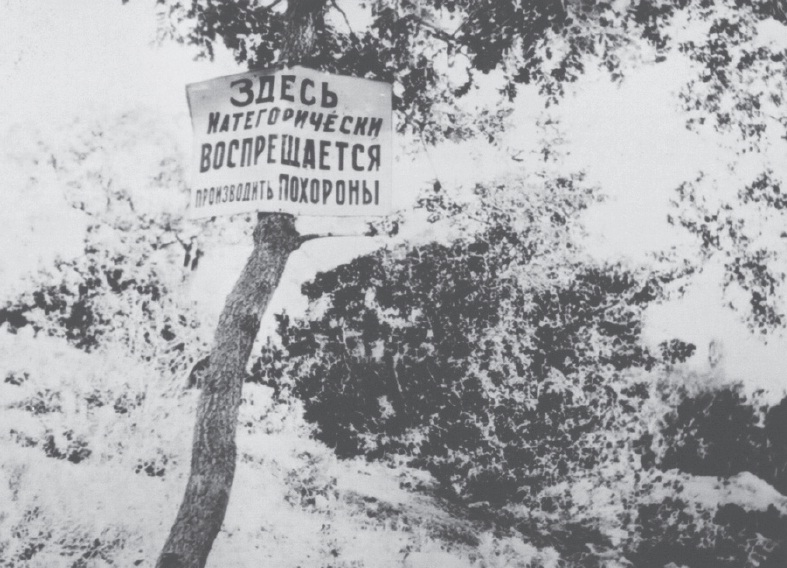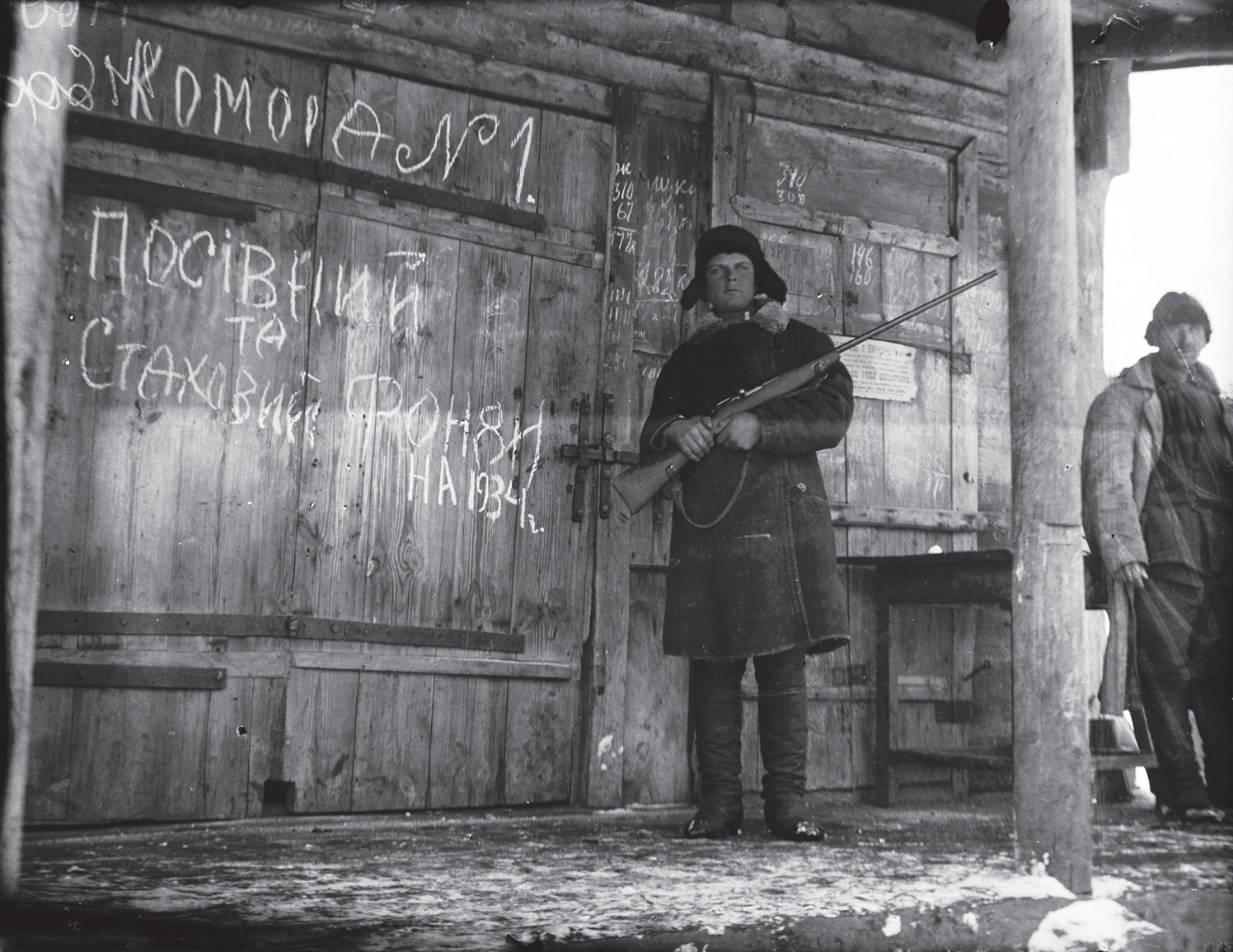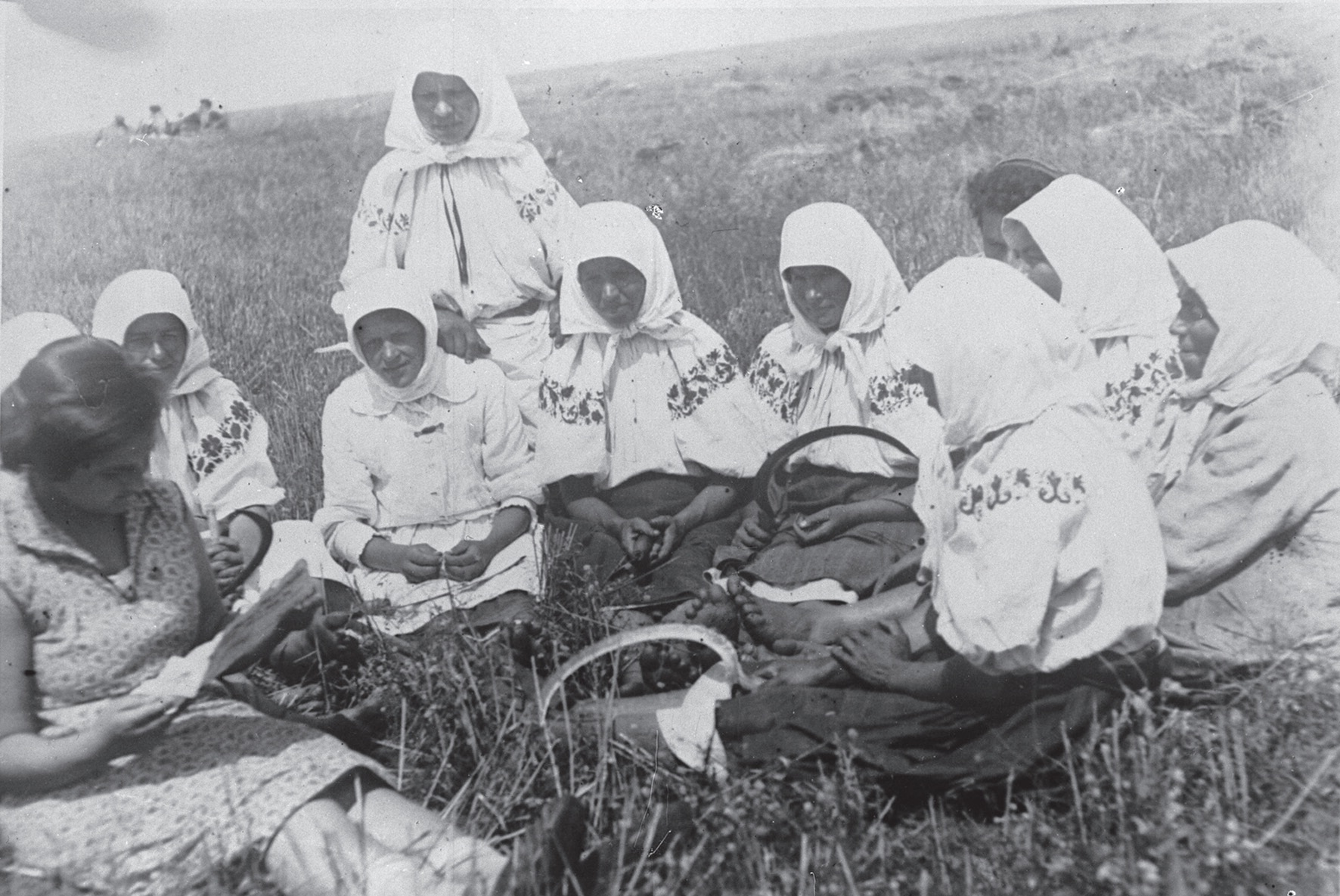Summary
In the late 1920s, Stalin had felt threatend by Ukraine's autonomy. As a result he decreed the 'Five Year Plan', which introduced collective farms and the collectivization of agriculture. The majority of Ukrainians were farmers, so they were not interested in giving up their land for collective farms. Though the Soviets did not take this lightly as they shot, arrested, and deported farmers who protested. Everyone's farms, livestock, and farming equipment was taken. In 1932, Stalin set unreasonable grain quotas and forbid any person from taking produce from the collective farms. Due to the high quotas, Ukrainians could not meet Stalin's requirements and were punished by being unable to receive food. People began to starve, but directives in 1933 forbid anyone to leave. There were around 4 million recorded deaths between 1932 and 1933 in Ukraine.
A sign in Kharkiv that states that the "burying of individuals is strictly forbidden here".

A map showcasing depopulation in areas of Ukraine due to the Holodomor.
Major Causes
Stalin's power was left unchecked at this time. Anyone who opposed him was taken out by the Red Army or Russian Secret Service. As the summary briefly explained, there were several causes that led up to the Holodomor itself. In 1928, Stalin introduced the collective farms to earn money for the USSR to feed industrialization plans as well as feed city workers. Succesful farmers were labelled as kurkuls (kulaks in Russian, literally meaning 'fists') and called enemies of the state. Dekulakization brigades came and confiscated everything the farmers had, evicting families from their homes. Around half a million people were packed in freight trains and shipped to uninhabited Siberia. All of these actions led to the Holodomor in 1932, with Ukrainians having nothing to do and nowhere to go.
A worker guarding the grain that was stolen from villagers.
Western Ignorance
The USSR created model villages called "Potemkin villages" in an attempt to deter reporters, and if any reporter did not follow the regime- their visa would be revoked. As such, no press agency protested against this. It would risk the agency's money, so why bother? However, Walter Duranty of the New York Times was allowed a visit. He reported that there was no famine, just "partial crop failures". This set the scene for the ignorance of Westerners, as they only looked to him for news on the matter. Still, several reporters were suspicious and attempted to enter Ukraine in the hopes of shedding light on the famine. While some published their articles and photographs, Duranty's writing overshadowed the others' work.The governments themselves are also to blame for the ignorance. Great Britain, the US, Canada, Germany, Italy, and Poland were aware of the Holodomor. They instead chose to keep a policy of non-interference. Franklin Roosevelt, the US president at the time, did not wish to destroy any relations with the USSR by sending aid. If the governments who were aware of this genocide at least informed the public or attempted to send aid, then so many deaths could have been prevented.

A staged farm made to seem like everything was going great in Ukraine